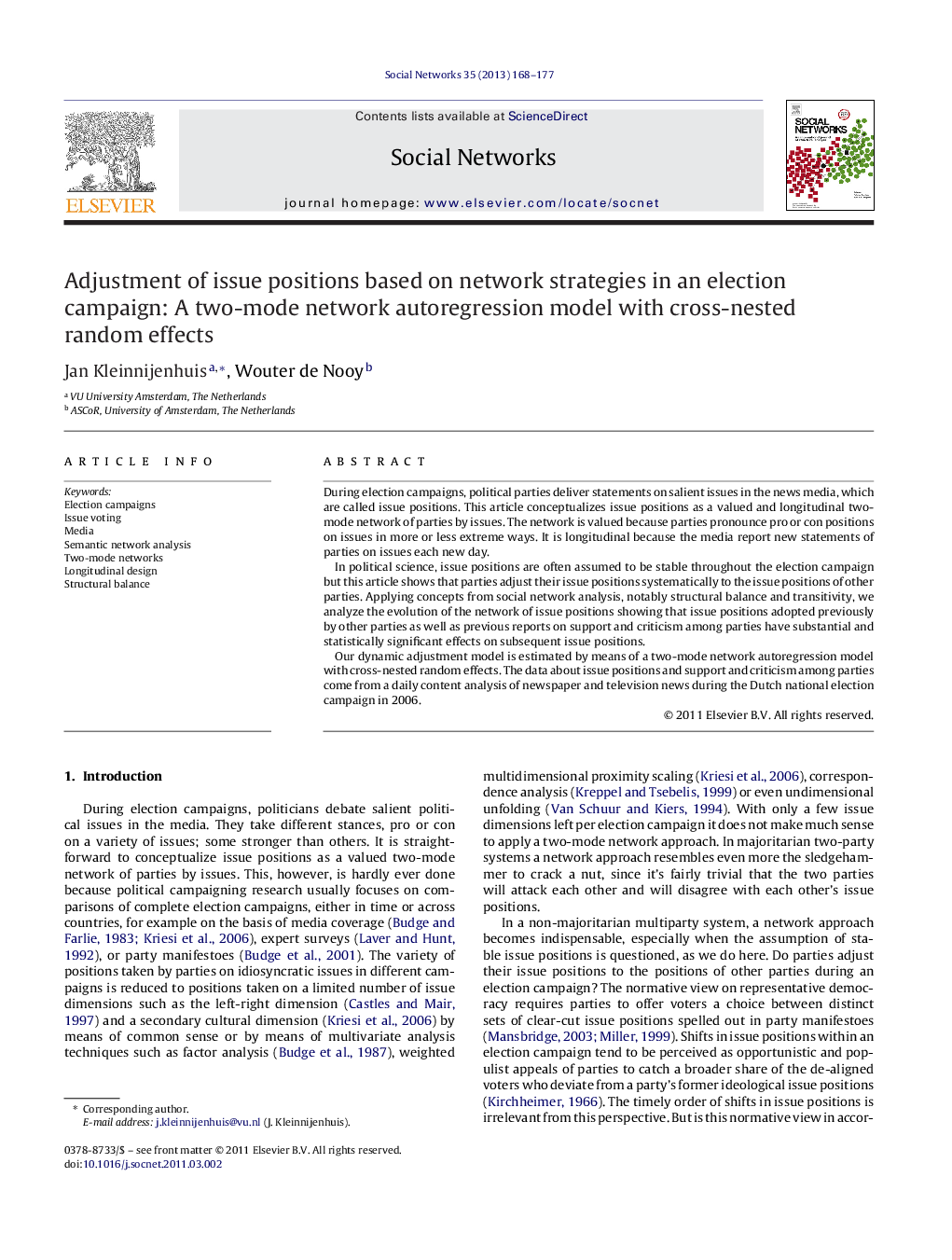| Article ID | Journal | Published Year | Pages | File Type |
|---|---|---|---|---|
| 1129304 | Social Networks | 2013 | 10 Pages |
During election campaigns, political parties deliver statements on salient issues in the news media, which are called issue positions. This article conceptualizes issue positions as a valued and longitudinal two-mode network of parties by issues. The network is valued because parties pronounce pro or con positions on issues in more or less extreme ways. It is longitudinal because the media report new statements of parties on issues each new day.In political science, issue positions are often assumed to be stable throughout the election campaign but this article shows that parties adjust their issue positions systematically to the issue positions of other parties. Applying concepts from social network analysis, notably structural balance and transitivity, we analyze the evolution of the network of issue positions showing that issue positions adopted previously by other parties as well as previous reports on support and criticism among parties have substantial and statistically significant effects on subsequent issue positions.Our dynamic adjustment model is estimated by means of a two-mode network autoregression model with cross-nested random effects. The data about issue positions and support and criticism among parties come from a daily content analysis of newspaper and television news during the Dutch national election campaign in 2006.
► This article conceptualizes issue positions as a two-mode network of parties by issues. ► We use media content as the data source. ► Parties adjust their issue positions to parties supported by them. ► Parties adapt their issue positions to parties that support them. ► Parties bring issue positions in line with the parties with whom they agree on most issues.
